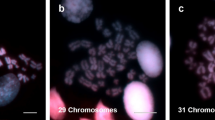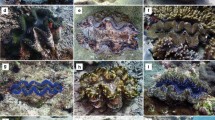Abstract
The Antarctic krill (Euphausia superba Dana 1852) is widely distributed throughout the Southern Ocean, where it provides a key link between primary producers and upper trophic levels and supports a major commercial fishery. Despite its ecological and commercial importance, genetic population structure of the Antarctic krill remains poorly described. In an attempt to illuminate genetic markers for future population and phylogenetic analysis, five E. superba mitogenomes, from samples collected west of the Antarctic Peninsula, were sequenced using new 454 next-generation sequencing techniques. The sequences, of lengths between 13,310 and 13,326 base pairs, were then analyzed in the context of two previously-published near-complete sequences. Sequences revealed relatively well-conserved partial mitochondrial genomes which included complete sequences for 11 of 13 protein-coding genes, 16 of 23 tRNAs, and the large ribosomal subunit. Partial sequences were also recovered for cox1 and the small ribosomal subunit. Sequence analysis suggested that the cox2, nad5, and nad6 genes would be the best candidates for future population genetics analyses, due to their high number of variable sites. Future work to reveal the noncoding control region remains.


Similar content being viewed by others
References
Laws RM (1985) The ecology of the southern ocean. Am Sci 73:26–40
Watanuki Y, Yoshihisa M, Yasuhiko N (1994) Euphausia superba dominates in the diet of Adélie penguins feeding under fast sea-ice in the shelf areas of Enderby Land in summer. Polar Biol 14(6):429–432. doi:10.1007/BF00240264
Ruiz-Halpern S, Duarte CM, Tovar-Sanchez A, Pastor M, Horstkotte B, Lasternas S, Agustí S (2011) Antarctic krill as a source of dissolved organic carbon to the Antarctic ecosystem. Limnol Oceanogr 56(2):521–528. doi:10.4319/lo.2011.56.2.0521
Jones CD, Ramm DC (2004) The commercial harvest of krill in the southwest Atlantic before and during the CCAMLR 2000 Survey. Deep Sea Res Part II: Trop Stud Oceanogr 51(12–13):1421–1434. doi:10.1016/j.dsr2.2004.06.009
Siegel V, Loeb V (1995) Recruitment of Antarctic krill Euphausia superba and possible causes for its variability. Mar Ecol Prog Ser 123:45–56. doi:10.3354/meps123045
Loeb V, Siegel V, Holm-Hansen O, Hewitt R, Fraser W, Trivelpiece W, Trivelpiece S (1997) Effects of sea-ice extent and krill or salp dominance on the Antarctic food web. Nature 387:897–900. doi:10.1038/43174
Atkinson A, Siegel V, Pakhomov E, Rothery P (2004) Long-term decline in krill stock and increase in salps within the Southern Ocean. Nature 432:100–103. doi:10.1038/nature02996
Zane L, Ostellari L, Maccatrozzo L, Bargelloni L, Battaglia B, Patarnell T (1998) Molecular evidence for genetic subdivision of Antarctic krill (Euphausia superba Dana) populations. Proc R Soc, Lond B 256:2387–2391. doi:10.1098/rspb.1998.0588
Batta-Lona PG, Bucklin A, Wiebe P, Patarnello T, Copley NJ (2010) Population genetic variation of the Southern Ocean krill, Euphausia superba, in the Western Antarctic Peninsula region based on mitochondrial single nucleotide polymorphisms (SNPs). Deep-Sea Res II. 58(13–16):1652–1661. doi:10.1016/j.dsr2.2010.11.017
Goodall-Copestakw WP, Pérez-Espona S, Clark MS, Murphy EJ, Seear PJ, Tarling GA (2010) Swarms of diversity at the gene cox1 in Antarctic krill. Heredity 104:513–518. doi:10.1038/hdy.2009.188
Bortolotto E, Bucklin A, Mezzavilla M, Zane L, Patarnello T (2011) Gone with the currents: lack of genetic differentiation at the circum-continental scale in the Antarctic krill Euphausia superba. BMC Genet 12(32). doi:10.1186/1471-2156-12-32
Machida RJ, Masaki UM, Mitsugu MY, Mutsumi N, Nishida S (2004) Organization of the mitochondrial genome of Antarctic Krill Euphausia superba (Crustacea: Malacostraca). Mar Biotechnol 6:238–250. doi:10.1007/s10126-003-0016-6
Shen X, Haiqing W, Ren J, Tian M, Want M (2010) The mitochondrial genome of Euphausia superba (Prydz Bay) (Crustacea: Malacostraca: Euphausiacea) reveals a novel gene arrangement and potential molecular markers. Mol Biol Rep 37(2):771–784. doi:10.1007/s11033-009-9602-7
Wilson AC, Cann RL, Carr SM, George EM, Gyllensten UB, Helm-Bychowski KM, Higuchi RG, Palumbi SR, Prager EM, Sage RD, Stoneking M (1985) Mitochondrial DNA and two perspectives on evolutionary genetics. Biol J Linn Soc 26:40–375. doi:10.1111/j.1095-8312.1985.tb02048.x
Moritz C, Dowling TE, Brown BM (1987) Evolution of animal mitochondrial DNA: relevance for population biology and systematics. Ann Rev Ecol Syst 18:269–292. doi:0.1146/annurev.es.18.110187.001413
Boore JL, Macey JR, Medina M (2005) Sequencing and comparing whole mitochondrial genomes of animals. Methods Enzymol 395:311–348. doi:10.1016/S0076-6879(05)95019-2
Boore JL (1999) Animal mitochondrial genomes. Nucleic Acids Res 27(8):1767–1780. doi:10.1093/nar/27.8.1767
Sambrook J, Russell DW (2001) Molecular cloning: a laboratory manual. Cold Spring Harbor Laboratory Press, Cold Spring Harbor
Cheng S, Chang SY, Gravitt P (1994) Long PCR. Nature 369:684–685. doi:10.1038/369684a0
Wyman SK, Jansen RK, Boore JK (2004) Automatic annotation of organellar genomes with DOGMA. Bioinformatics 20(17):2353–3255. doi:10.1093/bioinformatics/bth352
Lowe TM, Eddy SR (1997) tRNAscna-SE: a program for improved detection of transfer RNA genes in genomic sequence. Nucl Acids Res 25(5):955–964. doi:10.1093/nar/25.5.955
Hall TA (1999) BioEdit: a user-friendly biological sequence alignment editor and analysis program for Windows 95/98/NT. Nucl Acid Symp Ser 41:95–98
Frackman S, Kobs G, Simpson D, Storts D (1998) Betaine and DMSO: enhancing agents for PCR. Promega Notes 65:27
Pääbo S, Gifford JA, Wilson AC (1988) Mitochondrial DNA sequences from a 7,000-year old brain. Nucl Acids Res 16(20):9775–9787. doi:10.1093/nar/16.20.9775
Sarkar G, Kapelner S, Sommer SS (1990) Formamide can dramatically improve the specificity of PCR. Nucl Acids Res 18(24):7465. doi:10.1093/nar/18.24.7465
Bachmann B, Lüke W, Hunsmann G (1990) Improvement of PCR amplified DNA sequencing with the aid of detergents. Nucl Acids Res 18(5):1309. doi:10.1093/nar/18.5.1309
Chu KH, Li CP, Tam YK, Lavery S (2003) Application of mitochondrial control region in population genetic studies of the shrimp Penaeus. Mol Ecol Note 3(1):120–122. doi:10.1046/j.1471-8286.2003.00376.x
Diniz FM, Maclean N, Ogawa M, Cintra IHA, Bentzen P (2004) The hypervariable domain of the mitochondrial control region in Atlantic spiny lobsters and its potential as a marker for investigating phylogeographic structuring. Mar Biotechnol 7(5):462–473. doi:10.1007/s10126-004-4062-5
Liu Y (2010) Complete mitochondrial genome of the Chinese spiny lobster Panulirus stimpsoni (Crustacea: Decapoda): genome characterization and phylogenetic considerations. Mol Biol Rep 38(1):403–410. doi:10.1007/s11033-010-0122-2
Mancini E, De Biase A, Mariottini P, Bellini A, Audisio P (2008) Structure and evolution of the mitochondrial control region of the pollen beetle Meligethes thalassophilous (Coleoptera: Nitidulidae). Genome 51(3):196–207. doi:10.1139/G07-116
Acknowledgments
The authors would like to thank D. Jacobson, E. Slikas, D. Steel, and A. Alexander for their support with the 454 sequencing and analysis, C. Shaw for the samples used in this study, and M. O’Connor for assistance in constructing our sampling map. This research was co-funded by the ASSURE program of the Department of Defense in partnership with the National Science Foundation REU Site program under Grant No. NSF OCE-1004947.
Author information
Authors and Affiliations
Corresponding author
Electronic supplementary material
Below is the link to the electronic supplementary material.
Rights and permissions
About this article
Cite this article
Johansson, M., Duda, E., Sremba, A. et al. Assessing population-level variation in the mitochondrial genome of Euphausia superba using 454 next-generation sequencing. Mol Biol Rep 39, 5755–5760 (2012). https://doi.org/10.1007/s11033-011-1385-y
Received:
Accepted:
Published:
Issue Date:
DOI: https://doi.org/10.1007/s11033-011-1385-y




